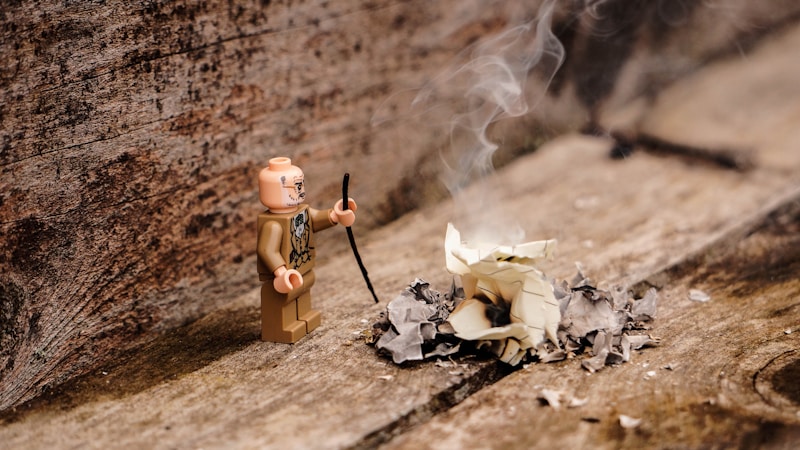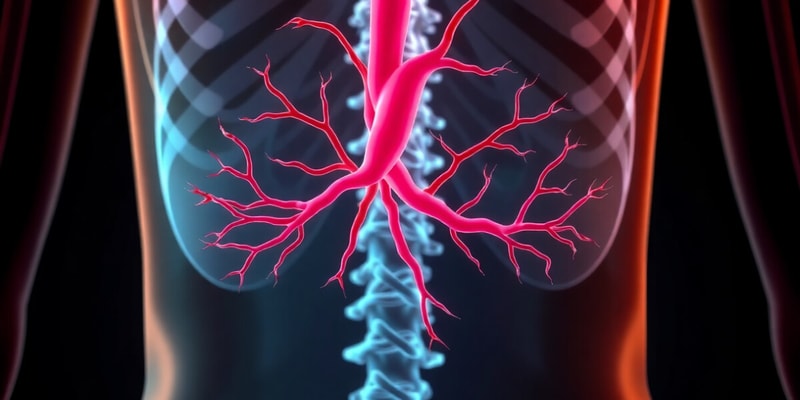Podcast
Questions and Answers
What is the primary nerve responsible for the motor innervation of the trapezius muscle?
What is the primary nerve responsible for the motor innervation of the trapezius muscle?
Which muscle is primarily responsible for extending, adducting, and medially rotating the humerus?
Which muscle is primarily responsible for extending, adducting, and medially rotating the humerus?
Which muscle originates from the spinous processes of T2 to T5?
Which muscle originates from the spinous processes of T2 to T5?
What muscle action is primarily associated with the upper fibers of the trapezius?
What muscle action is primarily associated with the upper fibers of the trapezius?
Signup and view all the answers
Which of the following muscles assists in retracting (adducting) the scapula?
Which of the following muscles assists in retracting (adducting) the scapula?
Signup and view all the answers
In terms of innervation, which of the following muscle groups is primarily innervated by the dorsal scapular nerve?
In terms of innervation, which of the following muscle groups is primarily innervated by the dorsal scapular nerve?
Signup and view all the answers
Which structure serves as the origin point for the levator scapulae muscle?
Which structure serves as the origin point for the levator scapulae muscle?
Signup and view all the answers
What is the primary function of the lower fibers of the trapezius muscle?
What is the primary function of the lower fibers of the trapezius muscle?
Signup and view all the answers
What is the primary origin of the Iliocostalis thoracis muscle?
What is the primary origin of the Iliocostalis thoracis muscle?
Signup and view all the answers
To which region does the Longissimus capitis muscle primarily insert?
To which region does the Longissimus capitis muscle primarily insert?
Signup and view all the answers
Which muscle blends with the Iliocostalis in the lumbar region?
Which muscle blends with the Iliocostalis in the lumbar region?
Signup and view all the answers
What is the insertion point for the Spinalis cervicis muscle?
What is the insertion point for the Spinalis cervicis muscle?
Signup and view all the answers
Which of the following muscles is associated with the lumbar area?
Which of the following muscles is associated with the lumbar area?
Signup and view all the answers
What region does the origin of the Iliocostalis lumborum muscle include?
What region does the origin of the Iliocostalis lumborum muscle include?
Signup and view all the answers
Which of these muscles is located nearest to the actual spine?
Which of these muscles is located nearest to the actual spine?
Signup and view all the answers
What is the origin of the Longissimus cervicalis muscle?
What is the origin of the Longissimus cervicalis muscle?
Signup and view all the answers
What is the primary function of the external urethral sphincter?
What is the primary function of the external urethral sphincter?
Signup and view all the answers
Where does the deep transverse perineal muscle insert?
Where does the deep transverse perineal muscle insert?
Signup and view all the answers
Which nerve innervates both the external urethral sphincter and the deep transverse perineal muscle?
Which nerve innervates both the external urethral sphincter and the deep transverse perineal muscle?
Signup and view all the answers
What is the origin of the compressor urethrae muscle?
What is the origin of the compressor urethrae muscle?
Signup and view all the answers
What is a significant function of the sphincter urethrovaginalis in women?
What is a significant function of the sphincter urethrovaginalis in women?
Signup and view all the answers
In what region do the erectile structures associated with the superficial perineal pouch develop?
In what region do the erectile structures associated with the superficial perineal pouch develop?
Signup and view all the answers
Which muscle is responsible for stabilizing the position of the perineal body?
Which muscle is responsible for stabilizing the position of the perineal body?
Signup and view all the answers
Which function is associated with the compressor urethrae in women?
Which function is associated with the compressor urethrae in women?
Signup and view all the answers
Which muscle primarily assists in holding the head of the femur in the acetabulum?
Which muscle primarily assists in holding the head of the femur in the acetabulum?
Signup and view all the answers
What is the primary action of the Coccygeus muscle?
What is the primary action of the Coccygeus muscle?
Signup and view all the answers
Which of the following muscles forms the majority of the pelvic diaphragm?
Which of the following muscles forms the majority of the pelvic diaphragm?
Signup and view all the answers
Which muscle has its proximal attachment at the ischial spine?
Which muscle has its proximal attachment at the ischial spine?
Signup and view all the answers
What is a function of the Obturator internus muscle?
What is a function of the Obturator internus muscle?
Signup and view all the answers
Which nerve innervates the Levator ani muscle?
Which nerve innervates the Levator ani muscle?
Signup and view all the answers
Which muscle is most closely associated with the action of abducting the thigh?
Which muscle is most closely associated with the action of abducting the thigh?
Signup and view all the answers
Which of the following muscles is indirectly involved in supporting pelvic viscera?
Which of the following muscles is indirectly involved in supporting pelvic viscera?
Signup and view all the answers
Which of the following muscles primarily functions in the medial rotation and flexion of the humerus?
Which of the following muscles primarily functions in the medial rotation and flexion of the humerus?
Signup and view all the answers
What is the primary role of scalene muscles within the thorax?
What is the primary role of scalene muscles within the thorax?
Signup and view all the answers
What is the specific origin of the pectoralis major muscle?
What is the specific origin of the pectoralis major muscle?
Signup and view all the answers
Which nerve innervates the pectoralis minor muscle?
Which nerve innervates the pectoralis minor muscle?
Signup and view all the answers
What is the main function of the subclavius muscle?
What is the main function of the subclavius muscle?
Signup and view all the answers
Which muscle assists in protracting the scapula and depressing the shoulder's tip?
Which muscle assists in protracting the scapula and depressing the shoulder's tip?
Signup and view all the answers
Which action is NOT associated with the pectoralis major muscle?
Which action is NOT associated with the pectoralis major muscle?
Signup and view all the answers
Which of the following statements about the thoracic muscles is true?
Which of the following statements about the thoracic muscles is true?
Signup and view all the answers
Study Notes
Muscles of the Back
- Superficial Group Innervation: Primarily innervated by anterior rami of spinal nerves.
-
Trapezius:
- Origin: Superior nuchal line, ligamentum nuchae, and spinous processes of C7 to T12.
- Function: Rotates scapula during humeral abduction, elevates, adducts, and depresses scapula.
-
Latissimus Dorsi:
- Origin: Spinous processes of T7-L5, sacrum, iliac crest, ribs 10-12.
- Function: Extends, adducts, and medially rotates the humerus.
-
Rhomboids (Major and Minor):
- Origin: Major - spinous processes of T2-T5; Minor - lower portion of ligamentum nuchae and spinous process of C7-T1.
- Function: Retracts (adducts) and elevates scapula.
-
Levator Scapulae:
- Origin: Transverse processes of C1 to C4.
- Function: Elevates the scapula.
Mnemonic for Back Muscles
-
Mnemonic: I Like Standing
- I: Iliocostalis
- Like: Longissimus
- Standing: Spinalis
Muscles of the Thorax
- Axio-appendicular Muscles: Extend from the thoracic cage to the bones of the upper limb; also act as accessory muscles of respiration.
-
Scalene Muscles:
- Function as accessory muscles of respiration and stabilize the vertebral column.
Muscles of the Pectoral Region
-
Pectoralis Major:
- Origin: Medial half of the clavicle, sternum, and costal cartilages.
- Function: Medial rotation, adduction, and flexion of the humerus at the shoulder joint.
-
Pectoralis Minor:
- Origin: Anterior surfaces of the third to fifth ribs.
- Function: Depresses and protracts the scapula.
-
Subclavius:
- Origin: Rib 1 at junction with costal cartilage.
- Function: Stabilizes the sternoclavicular joint; depresses the tip of the shoulder.
Muscles of the Pelvis
-
Obturator Internus:
- Origin: Pelvic surfaces of the ilium and ischium, obturator membrane.
- Function: Rotates the thigh laterally.
-
Piriformis:
- Origin: Pelvic surface of S2-S4 segments.
- Function: Laterally rotates and abducts the thigh.
-
Coccygeus:
- Origin: Ischial spine.
- Function: Supports pelvic viscera and flexes coccyx.
-
Levator Ani:
- Comprises puborectalis, pubococcygeus, and iliococcygeus.
- Function: Forms the pelvic diaphragm, supports pelvic viscera.
Deep Perineal Pouch Muscles
-
External Urethral Sphincter:
- Origin: From the inferior ramus of the pubis.
- Function: Compresses the membranous urethra.
-
Deep Transverse Perineal Muscle:
- Function: Stabilizes the perineal body.
-
Compressor Urethrae:
- Function: Accessory sphincter of the urethra in women.
-
Sphincter Urethrovaginalis:
- Function: Accessory sphincter of the urethra and may assist in vagina closure.
General Anatomy Notes
- Rectus Sheath and Linea Alba: Key structures in abdominal wall support.
- Umbilical Ring: Important for understanding abdominal anatomy.
- Interrelation of Muscles: Understanding muscle origins, insertions, and functions is crucial for grasping movement mechanics.
Studying That Suits You
Use AI to generate personalized quizzes and flashcards to suit your learning preferences.
Related Documents
Description
This quiz covers the structures and functions of the abdomen and pelvis, focusing on components like the rectus sheath, umbilical ring, and pelvic floor injuries. It assesses knowledge of the superficial and deep muscle groups of the back and their innervation. Test your understanding of this essential anatomy!




